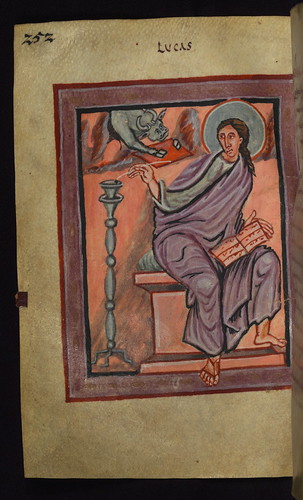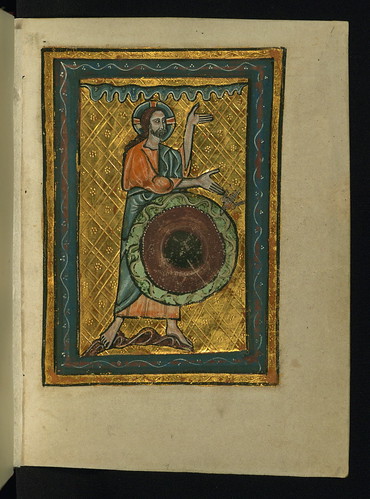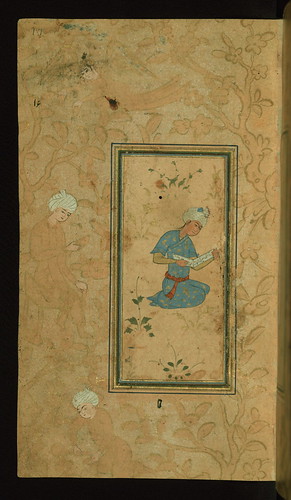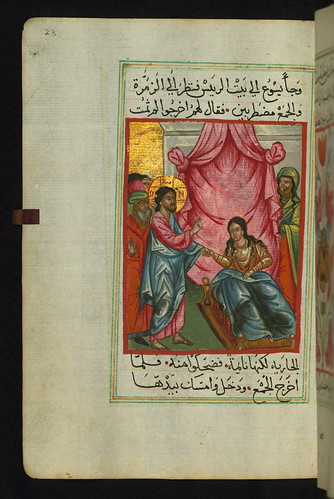
Illuminated Manuscript, Gospels of Freising, Evangelist Portrait of Luke, Walters Art Museum Ms. W.4, fol. 126v, originally uploaded by Walters Art Museum Illuminated Manuscripts.
This Gospel Book was written in Carolingian minuscule in the diocese of Freising, Germany ca. 875. Surprisingly small for an Gospel Book, it is nonetheless richly illuminated and offers an excellent example of Carolingian art. The expressive and emotive quality of the Evangelists, characterized by quick, sketchy brushwork, recalls the style developed by the Carolingian school of Reims in Northern France. This similarity may be attributed to a connection with Ebbo, the former Archbishop of Reims, since he fled to Freising at this time after a quarrel with Charles the Bald. The canon tables, however, derive from a different tradition, and recall Franco-Saxon imagery in its use of interlace within the columns, and of acanthus springing from the top corners. Due to these factors, the manuscript had once been attribution to Northern France, but it is now understood to be one of a group of related manuscripts from Freising during Ebbo's tenure. The manuscript is complete, consisting of 215 folios, and includes readings for the liturgical year, Jerome's Plures Fuisse and Novum Opus letters, decorated canon tables, and Evangelist portraits. The illumination is at the beginning of Luke's Gospel.





